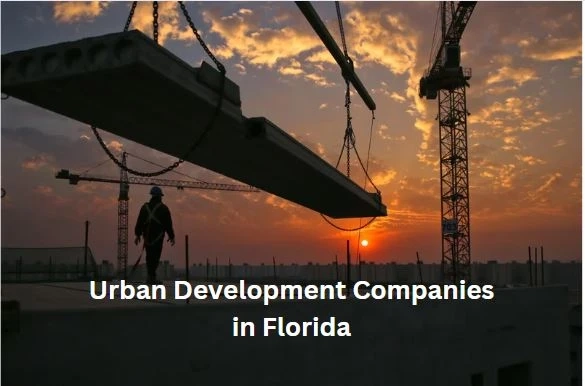Jacksonville FL, May 2024 - Urban planning plays a pivotal role in shaping the development of cities, impacting everything from transportation systems to public spaces. One significant area influenced by urban planning is commercial building construction. The design, placement, and functionality of commercial buildings are profoundly affected by the principles and regulations established through urban planning.
Zoning regulations
Zoning regulations are a fundamental aspect of urban planning that directly impacts commercial building construction. These regulations dictate the types of buildings that can be constructed in specific areas, ensuring a balanced and organized development of urban spaces.
Land use designations
Zoning laws designate areas for commercial, residential, industrial, and mixed-use developments. This ensures that commercial buildings are constructed in appropriate locations, promoting efficient land use and reducing conflicts between different land uses.
Building heights and densities
Zoning regulations often specify the maximum height and density of buildings. These limitations help manage urban growth, prevent overcrowding, and ensure that infrastructure can support the population density.
Setback requirements
Setbacks determine the distance a building must be from the property line, roads, and other structures. These rules ensure adequate space for sidewalks, parking, and green areas, contributing to the aesthetic and functional quality of urban spaces.
Transportation infrastructure
Urban planning significantly influences the development of transportation infrastructure, which in turn affects commercial building construction. Efficient transportation systems are crucial for the accessibility and success of commercial buildings.
Public transit accessibility
Urban planners design cities with public transit options such as buses, subways, and trains. Proximity to public transit is a crucial factor for commercial buildings, as it enhances accessibility for employees, customers, and clients.
Road networks
The layout and capacity of road networks influence the location and design of commercial buildings. Good road access is essential for the movement of goods and services, as well as for the convenience of patrons.
Pedestrian and cycling infrastructure
Modern urban planning increasingly emphasizes pedestrian and cycling-friendly infrastructure. Commercial buildings with easy access to walkways and bike lanes can attract more foot traffic and promote healthier, more sustainable modes of transportation.
Sustainable development practices
Sustainability is a core principle in contemporary urban planning, affecting commercial building construction in various ways. Planners aim to create cities that are environmentally friendly, economically viable, and socially inclusive.
Green building standards
Urban planning often incorporates green building standards and incentives for sustainable construction practices. This can include requirements for energy-efficient systems, renewable energy integration, and the use of sustainable materials.
Water management
Efficient water management practices, such as rainwater harvesting, greywater recycling, and the use of permeable materials, are promoted through urban planning. Commercial buildings designed with these practices in mind can significantly reduce their environmental footprint.
Open spaces and green areas
Planners designate areas for parks, green roofs, and open spaces within urban environments. These elements are essential for the well-being of urban residents and can enhance the appeal of nearby commercial buildings.
Economic development
Urban planning plays an important role in fostering economic development, which directly impacts commercial building construction. Well-planned cities create environments that attract businesses, investors, and a skilled workforce.
Business districts
Planners often designate specific areas as business districts, where commercial activities are concentrated. This clustering creates synergies among businesses, improves customer access, and fosters economic growth.
Mixed-use developments
Mixed-use developments, which combine residential, commercial, and recreational spaces, are increasingly popular in urban planning. These developments promote vibrant, 24/7 communities that support local businesses and reduce the need for long commutes.
Incentives and subsidies
Urban planning authorities may offer financial incentives, tax breaks, and subsidies to encourage commercial development in certain areas. These incentives can attract businesses to underdeveloped regions, spurring economic growth and revitalization.
Community and cultural considerations
Community needs and cultural contexts are integral to urban planning, affecting the design and placement of commercial buildings. Planners strive to create inclusive environments that reflect and respect the local culture and community.
Community involvement
Urban planning processes often involve community consultations to ensure that new developments meet local needs and preferences. Commercial buildings designed with community input are more likely to gain public support and succeed.
Cultural preservation
Planners work to preserve historical and cultural landmarks, integrating them into the urban fabric. Commercial buildings near such landmarks must be designed to complement and enhance the cultural heritage of the area.
Social equity
Ensuring that all community members have access to commercial amenities is a priority in urban planning. Planners aim to distribute commercial development equitably, avoiding the creation of commercial deserts in disadvantaged areas.
Regulatory and safety standards
Urban planning establishes regulatory and safety standards that commercial buildings must adhere to, ensuring safe and orderly development.
Building codes
Comprehensive building codes set by urban planners cover everything from structural integrity to fire safety. Commercial buildings must comply with these codes to ensure the safety of occupants.
Environmental regulations
Environmental impact assessments and regulations ensure that commercial developments do not harm the natural environment. Compliance with these regulations is crucial for sustainable urban development.
Disaster resilience
Urban planning incorporates strategies for disaster resilience, such as flood defenses and earthquake-resistant construction. Commercial buildings designed to these standards can better withstand natural disasters, protecting lives and investments.
Urban planning has a profound impact on commercial building construction, influencing everything from zoning regulations and transportation infrastructure to sustainability practices and community involvement. For developers and businesses, understanding the principles and goals of urban planning is essential for successful commercial building projects. By aligning construction practices with urban planning guidelines, stakeholders can create commercial spaces that are not only profitable but also integral to the thriving urban landscapes of the future. As cities continue to grow and evolve, the collaboration between urban planners, developers, and communities will be key to achieving sustainable and inclusive urban development.
If you are looking for commercial construction services in Jacksonville FL, or Historic commercial renovation in the USA, Avant Construction Group is the best alternative. Their experienced team completes all kinds of construction in the given time. You can contact them by calling 904.399.8846 / 904.399.8896.



